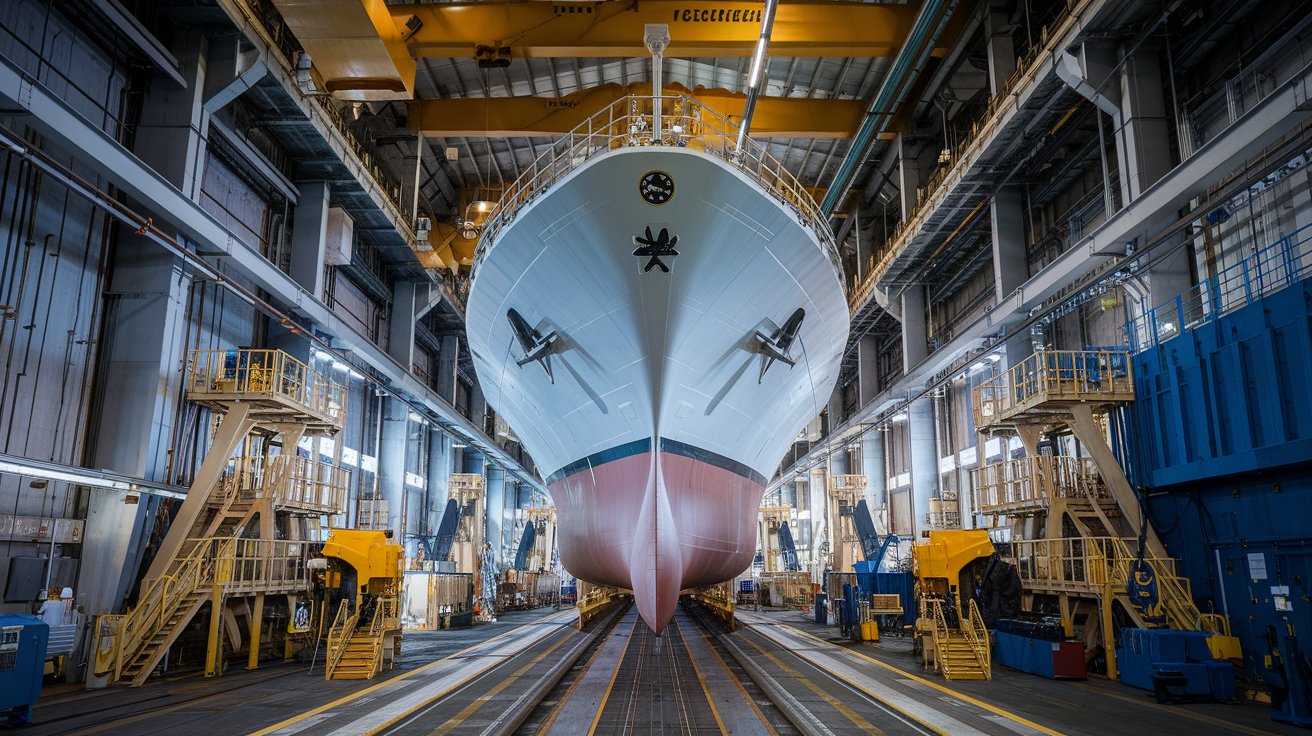In recent years, American shipbuilding has suffered from competition, particularly from Chinese shipyards that offer cheaper labor costs. As part of his economic and defense strategy, President Trump has proposed a plan to rejuvenate the U.S. shipbuilding industry. In this article, we will explore the key elements of this plan, the challenges it faces, and how it could potentially reshape the future of American shipyards and national security.
The Plan to Restore American Shipbuilding
What’s at Stake for the U.S. Shipbuilding Industry?
American shipbuilding, once a global leader, now faces a decline due to global competition. Shipyards in China, South Korea, and Japan produce ships at much lower costs, creating an imbalance in the international maritime market. The U.S. faces both economic challenges (such as high operational costs) and national security concerns (over-reliance on foreign ships for military and commercial use).
Trump’s Plan for Revitalization
President Trump’s shipbuilding plan aims to restore the U.S. as a global leader in ship production. The key components of the plan are:
- Creation of the Office of Shipbuilding: This new office will oversee the policies and initiatives aimed at restoring the industry.
- Tax Incentives and Subsidies: To make U.S. shipbuilding more competitive, companies that invest in modernizing American shipyards will receive tax breaks and subsidies.
- Support for Technological Innovation: The plan emphasizes innovation, including advancements in eco-friendly shipbuilding, to ensure that American yards are competitive in the long term.
What Will the Plan Achieve?
The main objectives are to create jobs in shipyards, reduce the reliance on foreign-built ships for both military and commercial use, and enhance national security by ensuring that the U.S. can independently produce its own ships.
Incentives for U.S. Shipyards: How Will They Benefit?
Tax Incentives and Funding Support
The Trump administration is offering tax incentives to shipbuilders who modernize their facilities and develop new technologies. This is designed to make American shipyards more competitive with cheaper foreign alternatives. The tax breaks are expected to stimulate investments and bring back jobs that have been lost to overseas competition.
Job Creation and Economic Growth
By revitalizing the shipbuilding industry, thousands of skilled jobs can be created. The Shipbuilders Council of America estimates that a fully revitalized industry could generate over 100,000 new jobs in engineering, design, manufacturing, and construction roles.
Industry Reactions: Pros and Cons
Industry groups, like the Shipbuilders Council of America, are supportive of the plan, believing it will revitalize U.S. shipyards. However, some shipping companies worry about the additional port fees on foreign-built ships, which might raise costs for U.S. businesses. This is a delicate balance that the government will need to manage carefully to avoid any negative economic impacts.
The National Security Implications of Trump’s Shipbuilding Plan
Why Is Shipbuilding Important to National Security?
Shipbuilding plays a crucial role in national defense. The U.S. military relies heavily on domestically produced ships for naval operations. With rising tensions in the global geopolitical landscape, it’s crucial for the U.S. to maintain control over its naval capabilities by ensuring a strong, independent shipbuilding industry.
Strengthening U.S. Military
By reviving the shipbuilding sector, Trump’s plan could enhance the U.S. Navy’s readiness and help meet the growing global demand for military vessels. Furthermore, it would safeguard critical infrastructure in times of international conflict, as the U.S. wouldn’t need to depend on foreign nations for ships.
Public Support for Reviving Shipbuilding
What Do Americans Think?
Recent surveys show that a significant majority of Americans, approximately 72%, support the revitalization of the American shipbuilding industry. This overwhelming support is largely due to the belief that the U.S. should strengthen its defense capabilities and create more manufacturing jobs at home.
Poll Results on Support:
- 72% of Americans support the plan to revive American shipbuilding
- 80% of Americans believe a stronger shipbuilding industry will create more jobs
- 65% of Americans think it’s important to reduce reliance on foreign-built military ships
Challenges Ahead: What Could Stand in the Way?
While the goals of the plan are ambitious, there are several challenges ahead:
- Cost of Modernization: Revitalizing old shipyards and bringing them up to modern standards will require significant investments.
- Balancing Global Trade: The U.S. must remain competitive with global shipping, as many companies rely on lower-cost foreign vessels to maintain affordable shipping.
- Regulatory Hurdles: Policies around foreign ship fees and labor standards need to be carefully crafted to avoid unintended economic consequences.
Despite these challenges, the plan’s long-term benefits could far outweigh the obstacles, especially if it spurs innovation and strengthens national security.
A Bold Step for America’s Future
Trump’s plan to revive American shipbuilding is a bold move designed to secure the U.S. economy and national defense. While it faces challenges, the potential rewards are significant. If implemented correctly, it could create thousands of jobs, reduce reliance on foreign ships, and ensure that the U.S. remains a dominant force in global maritime trade and military capabilities.
U.S. vs. Global Shipbuilding Capacity
| Country | Shipbuilding Capacity (Ships per Year) | Key Advantages | Challenges |
|---|---|---|---|
| U.S. | 200 | Advanced military ships, Tax incentives | High production costs |
| China | 1,000 | Cheaper labor, Efficient production | Lower quality control |
| South Korea | 700 | Technological innovation | Smaller domestic demand |
| Japan | 500 | Quality craftsmanship | Aging workforce |
Trump’s Shipbuilding Plan
Trump's Shipbuilding Plan
|
-------------------------------------------
| |
Incentives & Funding National Security Impact
| |
Tax Breaks for Companies U.S. Military Dependency
| |
Job Creation Strengthen U.S. Naval Power
| |
Modernization of Shipyards Geopolitical SecurityAdditional Data:
- The U.S. shipbuilding industry contributes more than $36 billion annually to the national economy.
- A report from the National Defense Authorization Act suggests that a fully revitalized shipbuilding industry could create over 200,000 direct and indirect jobs in the U.S. by 2030.





